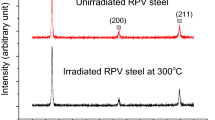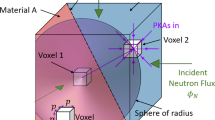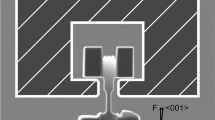Abstract
Two theories have been put forward to account for the broadening of the X-ray reflexions given by cold-worked metals. First, the crystals may be broken down into small mosaic elements (fragmentation)1, or, secondly, they may be so distorted by the stresses (microstresses) present that the lattice parameter varies over a range of values2. Recent work seems to indicate definitely that in the case of copper3, tungsten and α-brass4 the major part of the broadening is due to the latter effect.
This is a preview of subscription content, access via your institution
Access options
Subscribe to this journal
Receive 51 print issues and online access
$199.00 per year
only $3.90 per issue
Buy this article
- Purchase on Springer Link
- Instant access to full article PDF
Prices may be subject to local taxes which are calculated during checkout
Similar content being viewed by others
References
Wood, J. Sci. Instrum., 18, 153 (1941); Nature, 151, 585 (1943).
Brindley, Proc. Phys. Soc., 52, 117 (1940).
Stokes, Pascoe and Lipson, Nature, 151, 137 (1943).
Smith and Stickley, Phys. Rev., 64, 191 (1943).
Wood, Proc. Roy. Soc., A, 172, 231 (1939).
Proc. Phys. Soc., 54, 487 (1942).
J. Inst. Metals, 69, 149 (1943).
"Handbook of Chemistry and Physics" (Chemical Rubber Publishing Co., Cleveland, Ohio, 24th edition, 1940), pp. 1656–61.
Author information
Authors and Affiliations
Rights and permissions
About this article
Cite this article
MEGAW, H., LIPSON, H. & STOKES, A. Self-Recovery in Metals. Nature 154, 145–146 (1944). https://doi.org/10.1038/154145a0
Issue Date:
DOI: https://doi.org/10.1038/154145a0
This article is cited by
-
Magnetic Self-Recovery in Cold-Worked Copper
Nature (1946)
-
X-Ray Examination of Self-Recovery in Metals
Nature (1946)
-
X-Ray Examination of Self-Recovery in Copper
Nature (1946)
Comments
By submitting a comment you agree to abide by our Terms and Community Guidelines. If you find something abusive or that does not comply with our terms or guidelines please flag it as inappropriate.



